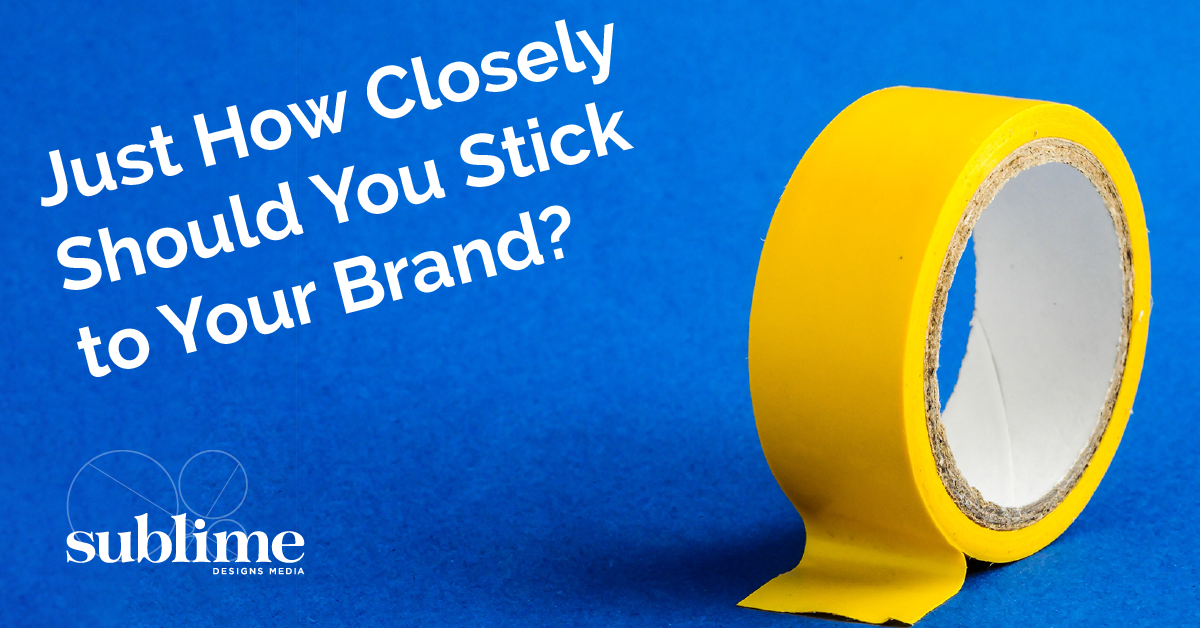One of the most common questions we get from our clients here at Sublime is “just how closely should I stick to my brand?” Our clients are wondering what guardrails exist and if so, where are they? Do all publications and events need to look just like the website and brochures, or is it ok to step outside the box?
These are all valid questions. Your brand should be your identity as an organization, after all. From your mission statement and values, the product or service you sell, and the people who work there, your brand is who you are.
But just like most identities, your brand will mature over time, informed by environments and circumstances yet to be known. With that said, it’s also important to maintain a level of consistency that will enable brand awareness to bloom. Thus comes the delicate dance of creating a brand that stays fresh yet true to itself, recognizable yet ever-evolving.
While there’s no real rule book to follow on where to remain consistent or where to be flexible, here are my two cents. You should remain rooted in your brand in areas like a color palette, your website, and sales collateral like pitch decks. When it comes to things like conferences, campaigns, events, eBooks, and publications, then it’s time to play outside the box and let your personality really show itself.
If I could give only one piece of advice on how to do this, it’s to stay open to creativity. This is important for both B2B businesses and B2C. There are endless ways to be creative that can still tie back to your original brand, whether that’s via a font, logo, or catch phrase. Take GEICO for instance. Their commercials are absurd and no two are alike, however, you always know it’s theirs based on one thing (do you hear it in your head yet?): “15 minutes can save you 15% or more on car insurance.”
Then you have the brands who stay so regimented to certain brand standards that they become stagnant, running the risk of alienating and turning off customers, and sometimes even their employees. I had a client once tell me that a certain color elicited a negative emotional response for her. When I inquired why, she said it was because it was associated with a brand she had worked for. The company had been so locked into incorporating this one color into every aspect of their branding and marketing, that she now hated the color. If an employee felt that way, imagine how a customer may feel.
Needless to say, leaving room for creativity within your brand makes room for flexibility within your marketing, which is crucial to staying fresh while attracting new customers across broad demographics. It will also help you highlight when something is special.
If you’re a B2B brand, this could mean hosting a user conference with an interesting theme. If your brand is flexible, you can pivot your designs towards it, generating out of the box messaging and graphics that will help make the event more exciting to participants.
For B2C brands, the holidays are the perfect opportunity to flex those creative muscles to create campaigns that set you apart. Coca Cola doesn’t become any more relevant as a beverage over the holiday season, but incorporate some nostalgic polar bears that have nothing to do with soft drinks and everything to do with the holidays, and suddenly you’re craving one (a soda, not a polar bear).
In your never-ending quest to connect with people as a brand, make sure you’re not stifling your creativity in the process. We all grow out of our awkward phases eventually, so just make sure you leave room for your brand to do the same.
